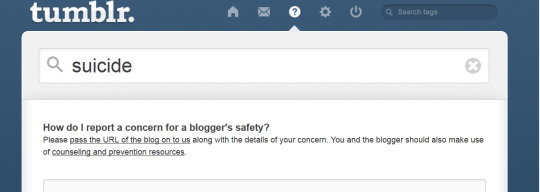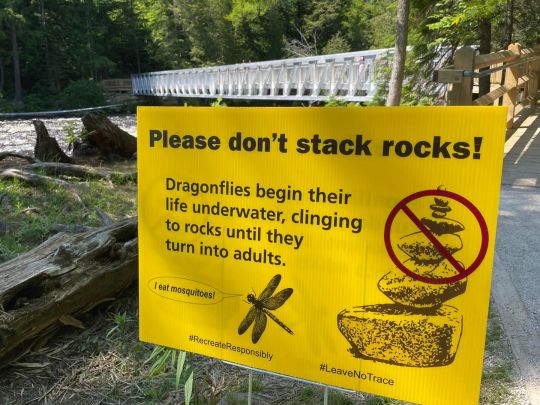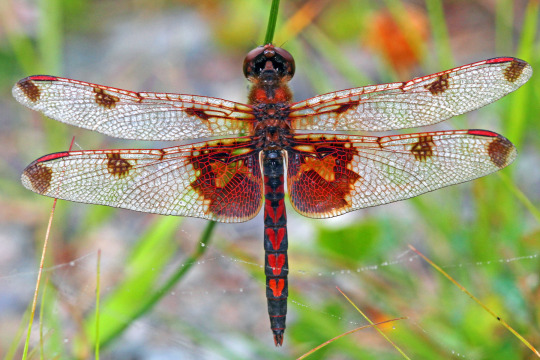I'm a cringelord, jsyk. I'm 16 years old and baby faced. I used to be called symbi-that-one-parasite and cinnidi-that-one-fusion. I think you can see the pattern by now.
Don't wanna be here? Send us removal request.
Text
878 notes
·
View notes
Text
Our friend's family dog, Smokey, is at risk of getting taken away and potentially euthanized by the city of Little Rock, Arkansas, because he has been misidentified by the city as a Pitbull (he is a Cane Corso). He has seen two different veterinarians who both agree that he is not a pitbull, but the local law says the dog catcher has full authority to determine the breed (and they are the ones claiming that he is a pitbull).
Online traction for this case has helped them get the case appealed, so it may help them win it too. If anyone could sign and share their petition (linked below) that would be really helpful for the family. Thank you all so much for your help in advance.
Here is also an article about the case in case others would like to read more about what's happened so far:
998 notes
·
View notes
Text
What to do if you get stung by a bee or wasp
(This is NOT a medical guide or anything of that sort, please know if you’re allergic and seek the proper help if so).
What I hope is a helpful guide on how to approach this situation to improve your understanding and respect for stinging insects. I am a native pollinator ecologist and conservation biologist and have worked with bees and wasps for years. I have handled them without getting stung since I was a young child. There is, actually, a trick to it, you know, but that’s not the focus of this post.
WHAT TO DO IF YOU GET STUNG BY A BEE OR WASP:
Ask yourself these things.
What did I do that caused this insect to attack?
Stinging insects like bees and wasps sting only in defense of their own lives or, if they are a social species, to protect their colony. They will also sometimes sting to obtain food if they are predators (but that doesn’t apply here). Stinging and injecting venom is energy-costly, and approaching a threat increases their chance of getting injured, so they avoid it if possible. Were you approaching a nest, knowingly or unknowingly? Did you purposefully or accidentally pick up the insect with force? Did it get caught in your clothes or beneath your bare feet? Analyze the situation and avoid rash assumptions or reactions. In some species, killing one individual releases pheromones that signal others to attack the threat, so punishing the insect by killing it only increases your likelihood of getting stung again.
How must I have appeared to this insect that it felt threatened enough to defend itself?
Insects perceive the world very differently, both due to their sensory abilities and their scale. You are a large, smelly, oily mammal that by definition is pretty intimidating. Other mammals (and birds) in their habitat often eat them, their young, and in the case of social species, their stored resources. A towering, upright-walking mammal, blundering about and making loud noises puts an insect on edge, as they may be expecting to be attacked. A sting can be used to alert an animal, ‘Hey, I’m down here, don’t step on me! Seriously!’. The few species that live in hives have evolved altruistic behaviors to protect their siblings, young, and queen. They are more likely to be aggressive, and even sacrifice themselves, as that is their first line of defense against an animal that they think is going to try and rip open their nest (or dig it up) to get at the conveniently-packed protein bites inside. When it is possible to just fly away to escape a threat, they will do so. When you encounter a bee or wasp on a flower, foraging, they will just leave if they feel threatened, unless you pursue them. But when near the nest, they are more likely to take precautions and drive away the threat before it gets close enough to hurt the young. When an insect gets caught in your clothes, they are confused and scared and can panic. They become pressed against your skin and cannot see a way out, and feel as if their life is in danger. Then, they may sting.
How can I be more observant and respectful in the future to avoid this again?
Make yourself aware of your actions that led to being stung. Realize that, hard a pill as it may be to swallow, the reason you got stung is you, not the insect. You did something that frightened it, and we have no way of telling insects that we mean them no harm. To not get stung in the future, you need to make yourself more aware of your surroundings, and how imposing you look to a small creature. Try and anticipate nest locations; nests of paper wasps and yellowjackets are often in trees or under awnings and are usually very visible. Some are in the ground and are marked by a hole from which individuals can be seen entering or hovering around. Bumblebees live in rodent burrows and holes beneath trees. Next, learn the body language of a bee/wasp. They actually tell us pretty clearly when they are tense, agitated, or scared. Most times, wasps at a nest will give you a fair distance warning at which point, if you continue approaching, they will start flying out to investigate you. If perched, they will turn and look at you, tensing up, sometimes rearing on their legs. When a lot of them at a nest do this at once, that’s your cue that they perceive you as a threat, and would rather you move along, please. If you do raise their ire, run away. You can outrun them, and there’s no harm done to either party. Just, be respectful of their personal space, and realize that if they are pushed to the point of stinging, you have made them feel like their life, or the lives of their kin, are in actual danger. It is easy to not pay attention to the body language of insects, since they are small and usually not at the forefront of people’s minds. But they do try and communicate best they can, because almost all animals prefer to avoid conflict.
What is the name of the insect that stung me?
This is something most people may not think of. It is imperative you think of the insect that hurt you as a real, living being with value and importance. Try and find out what species it was that stung you. There are thousands of species of bees and wasps, but only a few account for the majority of stings - paper wasps, yellowjackets (of which bald-faced hornets are a type), honeybees, and some bumblebees or other wasps. You can see that these are all social species. Solitary bees and wasps, which are the majority, rarely sting people and tend to be much more calm. Most wasps cannot even sting. Also realize that only females sting; males do not even have a stinger. Read up on the species and learn about its ecological role. What flowers does it pollinate? Does it hunt crickets or caterpillars? Is it widespread, or found only in your area? The more you learn, the more you form a more informed and realistic picture of this creature. It is no longer just the scary bug that stung you. You can easily observe these insects foraging with very little risk of being stung or even noticed. Some even let you gently touch them, whereas when on the nest this would be perceived as a threat. Understand their world and their role as part of a larger natural community. Allow yourself to be a respectful and curious part of it.
I cannot be clearer in saying this: no insect is evil. No insect wishes to hurt you, or seeks you out to spread misery for the sake of it. Wasps especially are vilified for this. Do not let yourself be tainted forever by a bad experience, and certainly do not form the basis for a species’ value by whether or not it hurt you at some point in time. Admire the dedication of this creature to protecting its family, admire its power of will, and its enduring strength and beauty. Admire its importance in upholding balance in its ecosystem. Admire the diversity of life that is not our own, and recall your responsibility in sharing this world with them. Take what may have been a bad or scary experience and turn it into a curiosity to learn more.
809 notes
·
View notes
Text
What to do if you get stung by a bee or wasp
(This is NOT a medical guide or anything of that sort, please know if you’re allergic and seek the proper help if so).
What I hope is a helpful guide on how to approach this situation to improve your understanding and respect for stinging insects. I am a native pollinator ecologist and conservation biologist and have worked with bees and wasps for years. I have handled them without getting stung since I was a young child. There is, actually, a trick to it, you know, but that’s not the focus of this post.
WHAT TO DO IF YOU GET STUNG BY A BEE OR WASP:
Ask yourself these things.
What did I do that caused this insect to attack?
Stinging insects like bees and wasps sting only in defense of their own lives or, if they are a social species, to protect their colony. They will also sometimes sting to obtain food if they are predators (but that doesn’t apply here). Stinging and injecting venom is energy-costly, and approaching a threat increases their chance of getting injured, so they avoid it if possible. Were you approaching a nest, knowingly or unknowingly? Did you purposefully or accidentally pick up the insect with force? Did it get caught in your clothes or beneath your bare feet? Analyze the situation and avoid rash assumptions or reactions. In some species, killing one individual releases pheromones that signal others to attack the threat, so punishing the insect by killing it only increases your likelihood of getting stung again.
How must I have appeared to this insect that it felt threatened enough to defend itself?
Insects perceive the world very differently, both due to their sensory abilities and their scale. You are a large, smelly, oily mammal that by definition is pretty intimidating. Other mammals (and birds) in their habitat often eat them, their young, and in the case of social species, their stored resources. A towering, upright-walking mammal, blundering about and making loud noises puts an insect on edge, as they may be expecting to be attacked. A sting can be used to alert an animal, ‘Hey, I’m down here, don’t step on me! Seriously!’. The few species that live in hives have evolved altruistic behaviors to protect their siblings, young, and queen. They are more likely to be aggressive, and even sacrifice themselves, as that is their first line of defense against an animal that they think is going to try and rip open their nest (or dig it up) to get at the conveniently-packed protein bites inside. When it is possible to just fly away to escape a threat, they will do so. When you encounter a bee or wasp on a flower, foraging, they will just leave if they feel threatened, unless you pursue them. But when near the nest, they are more likely to take precautions and drive away the threat before it gets close enough to hurt the young. When an insect gets caught in your clothes, they are confused and scared and can panic. They become pressed against your skin and cannot see a way out, and feel as if their life is in danger. Then, they may sting.
How can I be more observant and respectful in the future to avoid this again?
Make yourself aware of your actions that led to being stung. Realize that, hard a pill as it may be to swallow, the reason you got stung is you, not the insect. You did something that frightened it, and we have no way of telling insects that we mean them no harm. To not get stung in the future, you need to make yourself more aware of your surroundings, and how imposing you look to a small creature. Try and anticipate nest locations; nests of paper wasps and yellowjackets are often in trees or under awnings and are usually very visible. Some are in the ground and are marked by a hole from which individuals can be seen entering or hovering around. Bumblebees live in rodent burrows and holes beneath trees. Next, learn the body language of a bee/wasp. They actually tell us pretty clearly when they are tense, agitated, or scared. Most times, wasps at a nest will give you a fair distance warning at which point, if you continue approaching, they will start flying out to investigate you. If perched, they will turn and look at you, tensing up, sometimes rearing on their legs. When a lot of them at a nest do this at once, that’s your cue that they perceive you as a threat, and would rather you move along, please. If you do raise their ire, run away. You can outrun them, and there’s no harm done to either party. Just, be respectful of their personal space, and realize that if they are pushed to the point of stinging, you have made them feel like their life, or the lives of their kin, are in actual danger. It is easy to not pay attention to the body language of insects, since they are small and usually not at the forefront of people’s minds. But they do try and communicate best they can, because almost all animals prefer to avoid conflict.
What is the name of the insect that stung me?
This is something most people may not think of. It is imperative you think of the insect that hurt you as a real, living being with value and importance. Try and find out what species it was that stung you. There are thousands of species of bees and wasps, but only a few account for the majority of stings - paper wasps, yellowjackets (of which bald-faced hornets are a type), honeybees, and some bumblebees or other wasps. You can see that these are all social species. Solitary bees and wasps, which are the majority, rarely sting people and tend to be much more calm. Most wasps cannot even sting. Also realize that only females sting; males do not even have a stinger. Read up on the species and learn about its ecological role. What flowers does it pollinate? Does it hunt crickets or caterpillars? Is it widespread, or found only in your area? The more you learn, the more you form a more informed and realistic picture of this creature. It is no longer just the scary bug that stung you. You can easily observe these insects foraging with very little risk of being stung or even noticed. Some even let you gently touch them, whereas when on the nest this would be perceived as a threat. Understand their world and their role as part of a larger natural community. Allow yourself to be a respectful and curious part of it.
I cannot be clearer in saying this: no insect is evil. No insect wishes to hurt you, or seeks you out to spread misery for the sake of it. Wasps especially are vilified for this. Do not let yourself be tainted forever by a bad experience, and certainly do not form the basis for a species’ value by whether or not it hurt you at some point in time. Admire the dedication of this creature to protecting its family, admire its power of will, and its enduring strength and beauty. Admire its importance in upholding balance in its ecosystem. Admire the diversity of life that is not our own, and recall your responsibility in sharing this world with them. Take what may have been a bad or scary experience and turn it into a curiosity to learn more.
809 notes
·
View notes
Photo

I’ve seen a lot of posts on my dash tonight about users who are threatening suicide, with other Tumblr members posting in effort to try to get ahold of them. I think you all should see this:
IF THERE IS EVER A TUMBLR USER WHO HAS POSTED A GOOD-BYE MESSAGE, SUICIDE NOTE, VIDEO, OR ANYTHING OF THE SORT, PLEASE FOLLOW THIS POST.
1. Scroll to the top of your dashboard.
2. See the circular question mark icon at the top? It’s the third one over from your home symbol. Click on that, and a screen similar to the one in the picture will come up.
3. Where you can type in questions, the box with the magnifying glass at the top, type in the word “suicide.”
4. Click on the first link that shows up. It should say, “Pass the URL of the blog on to us.”
5. Type in the user’s URL and tell Tumblr admin that the user is contemplating suicide and has posted a message indicating that they are going through with it or will be attempting. Hit send! Tumblr administration will perform a number of actions to contact the user and take the necessary steps to prevent the suicide.
TUMBLR: THIS COULD SAVE A USER’S LIFE. PLEASE DO NOT IGNORE SUICIDE THREATS.
Reblog this to keep other users aware. Suicide isn’t a joke, and neither is someone’s life. If you didn’t know this, someone else may not, either. Pass it on.
2M notes
·
View notes
Note
If you want to know all characters that I'm making that have to do with bugs, they are Honey Bee (do I really have to say what bug she's based on), Crimson Hornet (Asian giant hornet), Seqquined Arachnoid (sequin spider and chameleon (only the camo aspect though)), Hawk Moth (moths and butterflies, not sure which specific ones yet), and Grim Reaper (she herself is based on aspects of death like angels, demons, skeletons, mummies, plague masks, etc. but she'll have bugs crawling on her)
Sounds cool! I think I especially would like Grim Reaper, love spooky stuff~
25 notes
·
View notes
Note
Ok, ignore that submission I sent, I misread the rules for posting, lol. But I want to make a character similar to my humanoid peacock character but instead of a peacock, the character will be a butterfly. Do you have any suggestions for amazing and exotic butterflies? I'd ask google but I wanted to know what you'd suggest (mainly because you are the bug expert and google can't be trusted all the time.) If you do have any please post pics too, thanks in advance
Tbh I find moths are often way more colorful, especially the day-flying ones! I made a post of some of my favorite colorful moths here a while back if you’d like to look at those for inspiration. My much shorter list of fav butterflies is here. The Madagascan sunset moth and Queen Alexandra’s birdwing butterfly are also popular for how colorful they are if you want to check those out.
And a few other butterflies that come to mind that I haven’t posted in the past:

Blue pansy photo by mike999

Mexican bluewing photo by greglasley

Ethilia longwing photo by jjstupka
Swallowtail butterflies in general have some pretty great coloring, too, if you want to browse those here.
I’d love to see the character design when you’re done, even if you don’t use one of my suggested species :)
109 notes
·
View notes
Text
Last night afte everyone went to bed, I found a spider upside down in my cats’ water bowl and I tried getting it out, planning on burying it later today but it slipped and fell in the water again. I tried getting it again when I saw subtle movements. IT WAS ALIVE!!! I helped it out again but it JUMPED BACK INTO THE WATER AND DOVE TO THE BOTTOM OF THE BOWL!!! I finally managed to get it out and on top of my toaster oven, which in hind sight was stupid but I wasn’t thinking. I grabbed my snack then went back to my room then realized that I wanted it in my room so I went back to my kitchen where the roaches come out at night (I have katsaridaphobia (fear of roaches) but I braved that fear for this little guy) and I went back over to the toaster oven where I saw it laying down some webbing. I put my finger in front of the spider and I saw it look at my finger then look up at me, in my eyes with its own looking like that of a puppy’s, as though it was asking me, “You want to keep me?” I almost cried at this point. It walked onto my finger then I walked it into my room and for a minute, I kept it on my finger, getting some good pics. After a failed attempt later, I managed to get the spider on my wall where I proceeded to take a few more pics then left it alone. I named the spider Siren. Wish I knew how to identify Siren’s gender. Siren is where Momma used to be. I know this sounds so unrealistic considering that spiders don’t want anything to do with people but here’s some pictures to prove it. Here’s a key to decipher the captions for the pictures, also, the captions for the pictures are under them. Actual caption | (extras) | trivia | jokes/me roasting myself

Here is Siren after it dove back into the water bowl. (Origin of name, originally was going to be called Diver but it sounded so bad, imo. I think Siren was trying to look for buried treasure but the only thing it’ll find is completely soaked dry cat food. _(´ཀ`」 ∠)_

Siren on the toaster oven. (WHOA, IS THAT 2 HUGE EYES AT THE FRONT oh wait, nvm, I’m stupid, it’s just water on its mouth)

Ditto. (Sorry for potato quality. dang, it’s dusty on my oven, it’s so dusty that instead of dust bunnies, I got dusty rabbits)

Siren on my hand with puppy eyes. (My personal favorite pic. You guys better not try to copy my finger/hand print)

Siren on the back of my pinky. (Forget Dora the Explorer, it’s Siren the Explorer)

Siren on my picture frame. (Best pic I got of Siren. Siren must really want to be framed but for what, mass murder against bug kind?)

Siren in Momma’s old web. (Momma was my very first pet spider which I find to be so adorable of how my newest one is there rn. And I thought the toaster oven was dusty, why does it look like Black Sunday came through 8 times)
@onenicebugperday I was also hoping that Siren’s gender and speies could be IDed. As you know, I live in Texas. Let me know if you need another pic to help ID
153 notes
·
View notes
Text
THAT'S A SLUG PENIS?! HOLY CRAP!!!
stepped outside and hanging there at eye level was a pair of leopard slugs and a pair of blue, undulating leopard slug penises.
(Limax maximus)
6K notes
·
View notes
Photo

I’ve seen a few ~aesthetic~ photos of rock stacks in rivers recently and this is just a reminder that you are destroying habitat when you move rocks around in rivers and streams.
In addition to dragonfly nymphs, rocky river beds are home to lots of other larval invertebrates like damselflies, mayflies, water beetles, caddisflies, stoneflies, and a bunch of dipterans. Not to mention lots of fish and amphibians!
Plus large scale rock stacking can change the flow of a stream and lead to increased erosion.
Anyway dragonfly for admiration:

Calico pennant by nbdragonflyguy
40K notes
·
View notes
Note
Hey, so I have a sister that was always super into bugs as a kid. She wanted to be an entomologist and all and it was her big thing. She's now studying environmental stuff and has entered that sort of world, but said she has a hard time figuring out how to get into learning about bugs. Apparently there's loads of resources on things like plants and fungi because people are into those, but less on macroinvertabrates. What sort of books and resources got it kick-started for you? Moreso science and technical stuff rather than surface level stuff
I will direct you to @cnestus to ask your question because they are an actual entomologist and I am not!
294 notes
·
View notes






